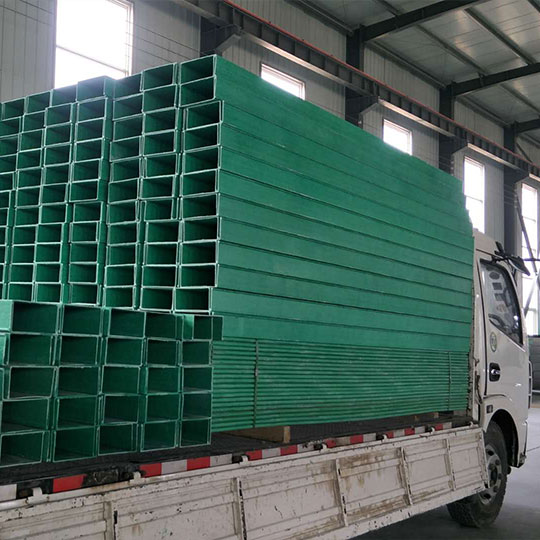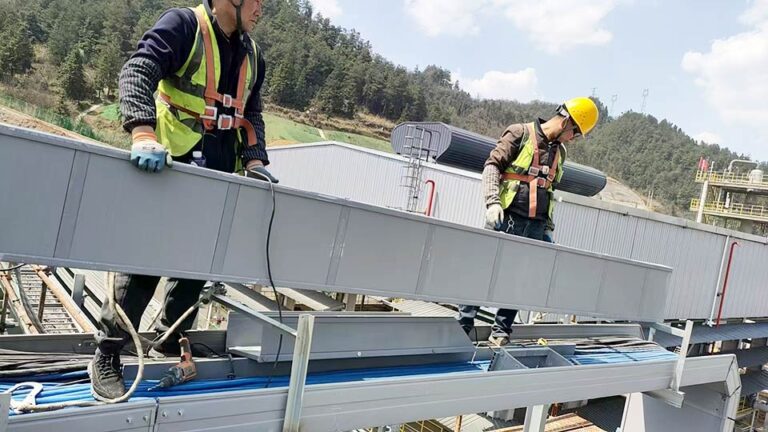Table of Contents
Introduction
Selecting the proper cable tray is essential for ensuring safe, efficient, and durable electrical installations. Different projects require specific types of cable trays, from industrial plants to data centers and outdoor installations. Choosing the right material, design, and supplier can save time, reduce costs, and improve safety. In this blog, we’ll break down the main cable tray types, their ideal applications, target customers, and key considerations to help you make the best choice.

Fireproof Cable Tray for High-Safety Projects
Fireproof cable trays are designed for environments where safety is critical. Industries such as data centers, hospitals, schools, and large commercial buildings require trays that meet strict fire-resistance standards. These trays prevent fire spread, maintain cable integrity, and comply with local safety regulations. Fireproof cable trays are ideal for engineers and facility managers who prioritize risk management and long-term reliability.
Composite Cable Tray for Corrosive Environments
Composite cable trays, often made from fiberglass-reinforced materials, are perfect for chemical plants, oil and gas facilities, and coastal installations. These trays are lightweight, corrosion-resistant, and suitable for harsh conditions with high humidity or chemical exposure. Project managers in industrial or marine sectors often choose composite trays for their durability and ease of installation, ensuring that electrical systems remain reliable in challenging environments.
Galvanized Cable Tray for Cost-Effective Industrial Applications
Galvanized steel cable trays are widely used in industrial plants and large-scale construction projects. They provide a balance between cost and durability, offering protection against moderate corrosion while supporting heavy cables. Contractors and electrical engineers favor these trays for their availability, standard sizes, and suitability for large orders. Galvanized trays are a reliable choice for general industrial environments where budget and bulk supply are key considerations.
Stainless Steel Cable Tray for High-End and Outdoor Projects
Stainless steel cable trays are designed for high-end industrial projects, chemical plants, offshore platforms, and medical facilities. They offer excellent corrosion resistance, high temperature tolerance, and long service life. These trays are perfect for outdoor or demanding applications, where safety, reliability, and longevity are paramount. Facility managers and engineers choose stainless steel cable trays for critical projects that require maximum durability and minimal maintenance.
Polymer/Plastic Cable Tray for Lightweight and Indoor Installations
Plastic or polymer cable trays are ideal for light-duty indoor projects, warehouses, and factories with non-critical applications. They are lightweight, non-conductive, and easy to install, making them a cost-effective solution for low-voltage or light cable setups. Electrical contractors working on interior projects often prefer plastic trays for their flexibility, low cost, and fast installation.
Technical Specifications Table
| Cable Tray Type | Ideal Customer | Application | Key Features | Potential Keywords |
|---|---|---|---|---|
| Fireproof Cable Tray | Data centers, hospitals, schools | High-safety projects | Fire-resistant, meets safety codes | fireproof cable tray, high temperature cable tray |
| Composite Cable Tray | Industrial managers, offshore projects | Chemical plants, coastal sites | Corrosion-resistant, lightweight | composite cable tray, corrosion resistant cable tray |
| Galvanized Cable Tray | Contractors, industrial engineers | Industrial plants, construction sites | Durable, cost-effective | galvanized cable tray, economical cable tray |
| Stainless Steel Cable Tray | High-end industrial projects | Outdoor, chemical, and medical facilities | Long lifespan, corrosion-resistant | stainless steel cable tray, outdoor cable tray |
| Polymer/Plastic Cable Tray | Light industrial projects | Indoor installations, warehouses | Lightweight, easy to install | plastic cable tray, indoor cable management |
Conclusion
Choosing the right cable tray for your project depends on the environment, cable load, budget, and safety requirements. Fireproof trays suit high-risk installations, composite trays handle corrosive conditions, galvanized trays provide cost-effective durability, stainless steel trays offer long-term reliability, and polymer trays are ideal for light indoor setups. Working with a reliable supplier ensures you get high-quality trays, proper accessories, and expert guidance for seamless installation.
FAQ
What type of cable tray is best for outdoor installations?
For outdoor projects, stainless steel or composite (fiberglass) cable trays are recommended. They resist corrosion, withstand UV exposure, and ensure long-term durability.
How do I choose the right cable tray for industrial plants?
Industrial projects often require heavy-duty trays such as ladder or galvanized trays. Consider cable load, environmental conditions, and compliance with safety standards when selecting a tray.
Are fireproof cable trays necessary for all projects?
Fireproof trays are essential in high-risk environments like data centers, hospitals, and schools, where fire safety regulations are strict. For low-risk indoor projects, standard galvanized or polymer trays may suffice.
What accessories should I consider with my cable tray system?
Accessories like cable tray clamps, hold-down clamps, and conduit clamps improve cable organization and stability. They are essential for both indoor and outdoor installations, especially in environments with vibration or heavy cable loads.
How do I ensure my cable trays meet quality and safety standards?
Accessories like cable tray clamps, hold-down clamps, and conduit clamps improve cable organization and stability. They are essential for both indoor and outdoor installations, especially in environments with vibration or heavy cable loads.




